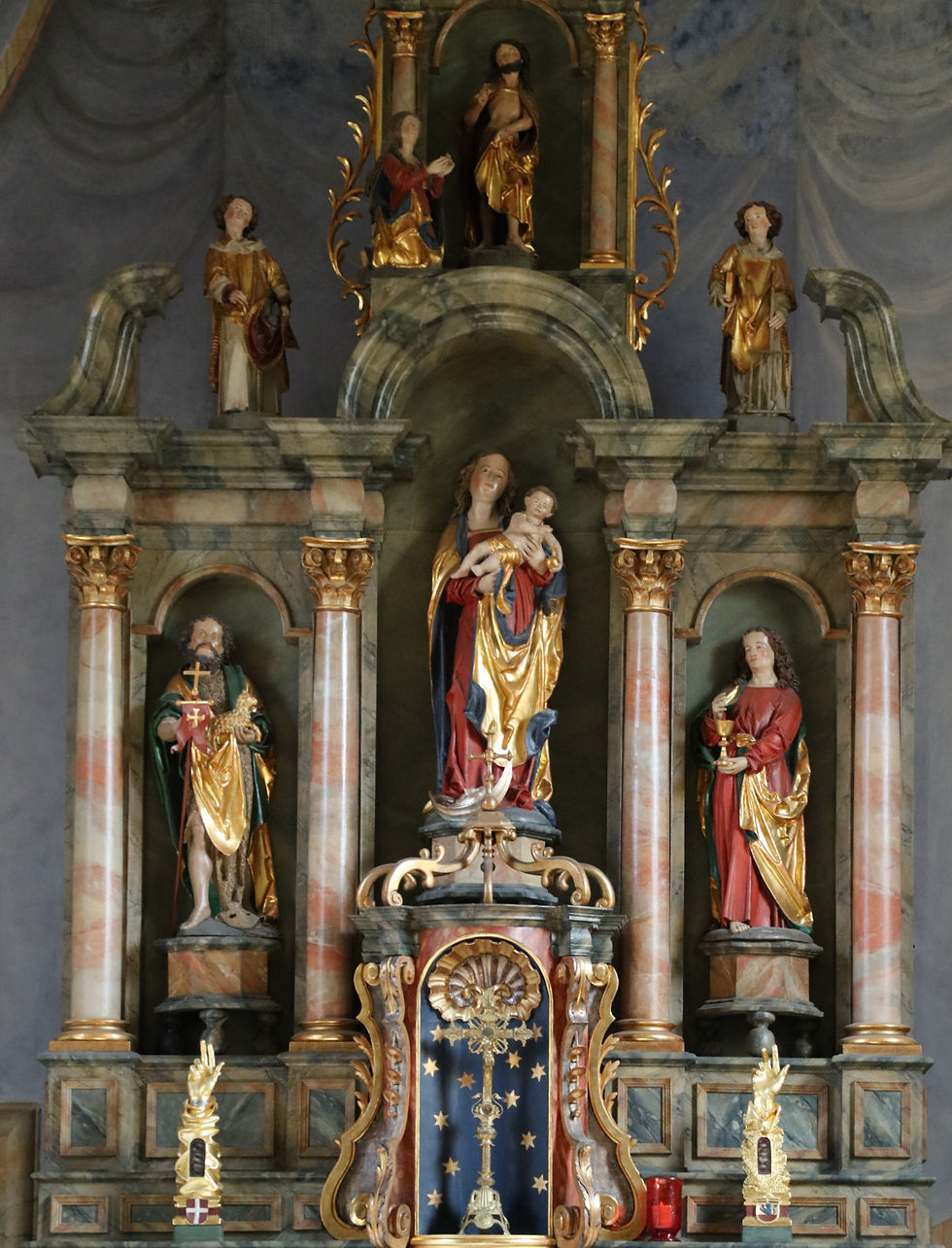The Église St. Jean is a combination of the old and the modern, especially the stations of the cross.
Fribourg is known for its cultural plurality, university, and bridges over the Saane/Sarine River that link the French-speaking part of Switzerland to the German-speaking part. St. Jean is located near one of the bridges that cross the Sarine at the lower section of the city.
Fribourg is also known for its many bridges made of wood, stone or metal.
Fribourg is the capital of the Swiss canton of Fribourg and the district La Sarine . It is located on both sides of the river Saane/Sarine, on the Swiss Plateau, and is a major economic, administrative and educational center on the cultural border between German and French Switzerland. Its Old City, one of the best-maintained in Switzerland, sits on a small rocky hill above the valley of the Sarine.
The monasteries of Fribourg have always formed a center of religious culture, which includes architecture, sculpture and painting, and have contributed to the culture of the city. The Franciscan monastery was donated by Jakob von Riggisberg in 1256. In early times, it was closely associated with the city council, because it housed the city archives and its monastery church was used for town meetings until 1433.
Similarly, the Augustinian monastery was founded in the mid-13th century, and enjoyed the support of the noble Velga family for a long time. Additionally, La Maigrauge has existed since 1255, and has belonged to the Cistercians since 1262. An important institution was the public hospital, opened in the mid-13th century, which provided services for the poor.
During the Reformation, Fribourg remained Catholic, although it was nearly surrounded by the Protestant Bern. This led to repeated conflicts over religion in border regions, and in areas controlled jointly by Fribourg and Bern. The city was a major center of the Counter-Reformation. At the end of the 16th century and the beginning of the 17th, new monasteries were established in the city, including: a Capuchin monastery (1608), another on Bisemberg (1621), an Ursuline monastery (1634), and a Visitandine monastery (1635). The most influential monastery, however, was that of the Jesuits, which contributed to a large extent to the advancement and prosperity of the city. It established the College of Saint Michael in 1582, the theological faculty of which formed the basis of the University of Fribourg. The concept of an objective press was also begun by the Jesuits.
In 1613, Fribourg became the seat of the Bishop of Lausanne, who, after the Reformation, was forced first into Evian, and then into exile in Burgundy. Today it is the seat of the Diocese of Lausanne, Geneva and Fribourg.
Whenever Michael and I are in Fribourg, we always stop and pray in this church.


















The scenes for the stations of the cross are from around Fribourg.



Thank you for this lovely post! I am researching my family tree and discovered that a first cousin (5 times removed!) was the parish priest at St. Jean in Friborug from 1811 to 1832. I wonder if this is the same church?